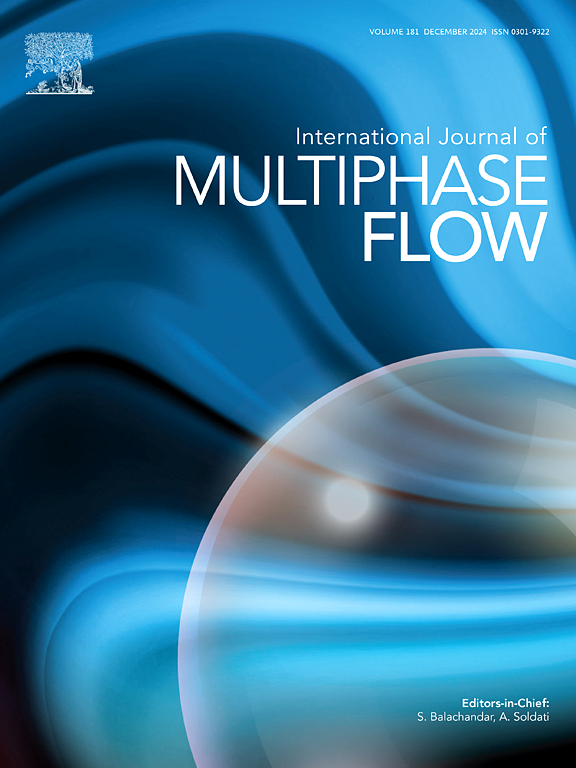Convection-driven mixing inside microdroplets
IF 3.6
2区 工程技术
Q1 MECHANICS
International Journal of Multiphase Flow
Pub Date : 2025-05-24
DOI:10.1016/j.ijmultiphaseflow.2025.105277
引用次数: 0
Abstract
Droplet generators represent a fast-growing area of microfluidics, since each volume of the dispersed phase functions as an individual microreactor, therefore they offer high throughput and reduced sample consumption. By injecting the dispersed phases containing the reactants, the mixing can be tuned separately, thus a higher control over reactions inside the droplets is achievable. The numerical investigation of such multi-phase and multi-component systems proposes various challenges, since the concentrations of species also depend on the distribution of phases.
In this article, we investigate the concentration distribution of the species in microfluidic droplet generators both experimentally and theoretically. Besides the characterization of the distribution of the dispersed and continuous phases, we have also studied the effect of injection rates on mixing inside the droplets. The size of the droplets decreases on increasing the flow rate of the oil phase and increases on increasing the flow rate of water phase compared to the oil phase. The numerical analysis based on solving the Navier–Stokes equation with volume-of-fluid method including a diffusive component in the aqueous phase corroborated the experimental findings. Furthermore, by determining the contribution of various transport processes to mixing of reactants inside the dispersed phases, we have shown that convection is dominant inside the droplets for all parameters used.
微滴内部对流驱动的混合
液滴发生器代表了微流体快速发展的领域,因为分散相的每个体积都作为一个单独的微反应器,因此它们提供高通量和减少样品消耗。通过注入含有反应物的分散相,可以单独调节混合,从而可以实现对液滴内反应的更高控制。这种多相多组分系统的数值研究提出了各种挑战,因为物种的浓度也取决于相的分布。本文从实验和理论两方面研究了微流控液滴发生器中各组分的浓度分布。除了对分散相和连续相的分布进行表征外,我们还研究了注射速率对液滴内部混合的影响。与油相相比,油相流速越大,液滴粒径越小,水相流速越大,液滴粒径越大。采用含扩散组分的流体体积法求解Navier-Stokes方程的数值分析证实了实验结果。此外,通过确定各种传输过程对分散相内反应物混合的贡献,我们已经表明,对流在液滴内占主导地位,用于所有参数。
本文章由计算机程序翻译,如有差异,请以英文原文为准。
求助全文
约1分钟内获得全文
求助全文
来源期刊
CiteScore
7.30
自引率
10.50%
发文量
244
审稿时长
4 months
期刊介绍:
The International Journal of Multiphase Flow publishes analytical, numerical and experimental articles of lasting interest. The scope of the journal includes all aspects of mass, momentum and energy exchange phenomena among different phases such as occur in disperse flows, gas–liquid and liquid–liquid flows, flows in porous media, boiling, granular flows and others.
The journal publishes full papers, brief communications and conference announcements.

 求助内容:
求助内容: 应助结果提醒方式:
应助结果提醒方式:


